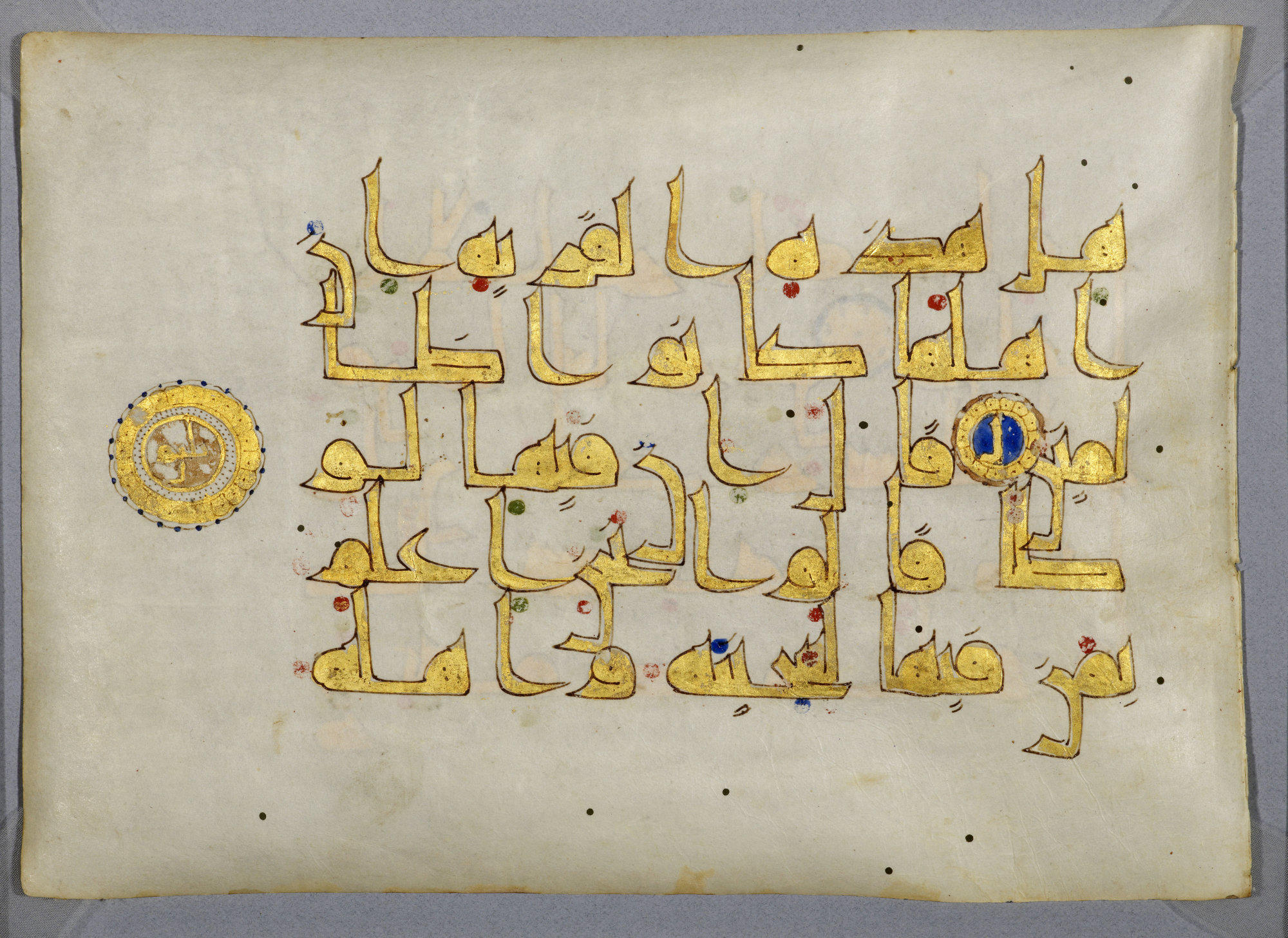Click on the image to zoom
Qur'an leaf
- Accession Number:AKM480
- Place:Near East or Iran
- Dimensions:14.9 x 20.9 cm
- Date:900s
- Materials and Technique:Opaque watercolour, gold, ink, vellum
The Qur’an to which to which this folio once belonged has often been given a Maghribi attribution because sections of the manuscript were purportedly discovered in the mosque at Qayrawan, Tunisia. However, as the abjad system (by which Arabic letters are used for verse counts) in this Qu’ran has been identified as 'eastern', it is possible that the manuscript was produced in more eastern Islamic lands, perhaps in the greater Iranian world. No expense was spared in the preparation of this Qur’an, which was also calligraphed in gold ink using the technique of chrysography. At only five lines of fine kufic script per page, the cost of production would have been high, as its completion would have required a proportionately greater amount of vellum, ink, colours, and gold. Vocalisations appear in the form of red, blue, and green dots. Singular verses are divided by gold rosettes, while every tenth verse receives an abjad letter, echoed in the margin within a larger medallion containing the verse count in gold (in this case, thalathun for “thirtieth”). Other leaves and sections from the same Qur’an can be found in various collections, including the Bibliothèque Nationale, the National Institute of Archaeology, Tunis and the Beit al-Quran, Bahrain.
Note: This online resource is reviewed and updated on an ongoing basis. We are committed to improving this information and will revise and update knowledge about this object as it becomes available.


